Instructional Series
This site will be closing soon as its content has moved to Tāhūrangi.
2024 titles are available on Tāhūrangi. Use the filters to find specific series.
Find Literacy resources at Tāhūrangi - Literacy.
Welcome to the English medium literacy instructional series teaching and learning resources for years 1 to 8.
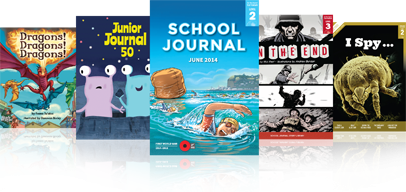
- Gold
- Purple
- Magenta
- Yellow
- 3
- 4
- 2
- 1
- 6
- 4
- 5
- 8
- 7
- 3
- 1
- English
- Social Sciences
- Science
- Health and Physical Education
- Technology
- Mathematics and Statistics
- The Arts
- Non-fiction
- Fiction
- None
- Nature of science
- Geometry and Measurement
- Living world
- Planet Earth and beyond
- Nature of technology
- Physical world
- Number and Algebra
- Statistics
- Technological knowledge
- Material world
- Technological practice
- Engage with science
- Gather and interpret data
- Interpret representations
- Use evidence
- Articles
- Stories
- Poems
Search results
166 items - Showing 81 - 90
-
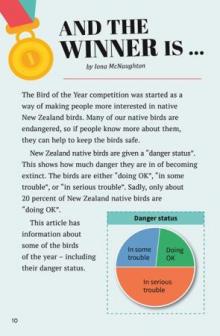
And the Winner is...
by Iona McNaughton
This article builds on ideas introduced in “Bird of the Year” (in the same journal) and provides information about six winners of the Bird of the Year competition. Much of the information is presented in the form of tables, allowing students to gain experience in reading different text formats. Together, the two articles provide opportunities for students to identify and discuss main ideas about native New Zealand birds.
Gold 1
-
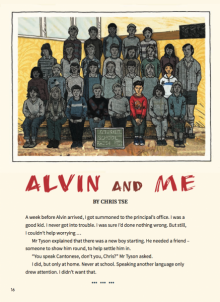
Alvin and Me
by Chris Tse
illustrated by Peter Campbell
"A week before Alvin arrived, I got summoned to the principal’s office. I was a good kid. I never got into trouble. I was sure I’d done nothing wrong. But still, I couldn’t help worrying..."
-
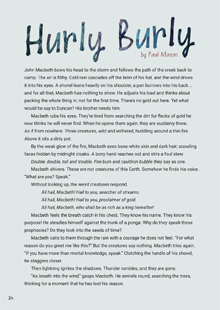
Hurly Burly
by Paul Mason, illustrations by Rosie Colligan
“Hurly Burly” is a spooky morality tale set in the New Zealand gold rush and based on Shakespeare’s Macbeth. John Macbeth is returning to camp when he sees three wild and withered creatures stirring a foul stew and incanting “double, double, toil, and trouble”. The unearthly creatures prophesise his future riches. When John returns to the camp, his brother Duncan announces that he has struck gold and asks John to head into town to register his claim. The story takes a dark turn when John’s wife Sarah encourages him to murder his brother and take the claim as his own.
-
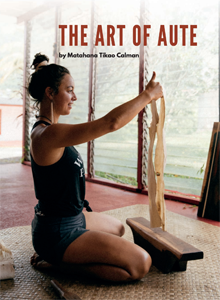
The Art of Aute
by Matahana Tikao Calman
Little is known about the history of cloth-making in Aotearoa. This article is a useful introduction to a tradition that’s found across the Pacific. Nikau Hindin has led the way with its recent revival in New Zealand – both learning a cloth-making practice that’s been around for centuries, then using this cloth for her art.
-

Designed for Good
by Philip Cleaver
The New Zealand environment has been badly affected by introduced pests such as rats, stoats, and possums. “Designed for Good” follows the process of developing an effective and humane trap to reduce these pest populations. The article tells the story of the project, from the first “That’s it!” moment through to the production of thousands of traps, which are now in use throughout New Zealand.
-
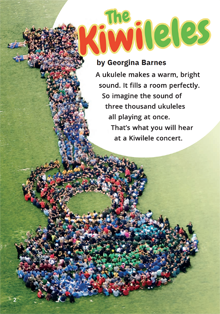
The Kiwileles
by Georgina Barnes
This report provides information about the Kiwileles, a ukulele orchestra made up of New Zealand school students. It focuses on the experiences of students at East Tamaki School and includes a description of some of the steps involved in learning to play a ukulele.
-
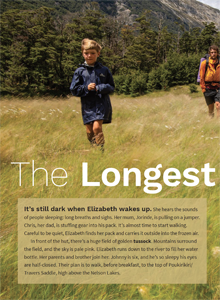
The Longest Walk
by Rebekah White
The Rapsey family, including nine-year-old Elizabeth and her six-year-old brother, Johnny, spent just over four months walking the entire length of New Zealand. During this time, they lived a simple life, learning about the natural world around them and the various ways to engage with it. Rebekah White captures both the sense of adventure and the contemplative moments through her lyrical style, which contains some elements of creative non-fiction.
-
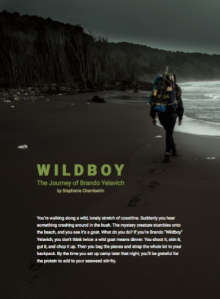
Wildboy: The Journey of Brando Yelavich
by Stephanie Chamberlin
One boy's journey and what he learnt along the way.
-
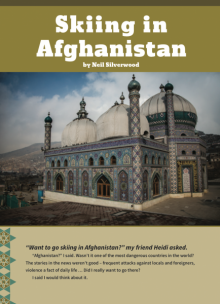
Skiing in Afghanistan
by Neil Silverwood
"'Want to go skiing in Afghanistan?' my friend Heidi asked. 'Afghanistan?' I said. Wasn’t it one of the most dangerous countries in the world? The stories in the news weren’t good – frequent attacks against locals and foreigners, violence a fact of daily life ... Did I really want to go there? I said I would think about it."


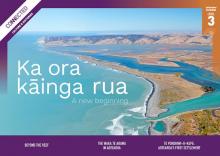


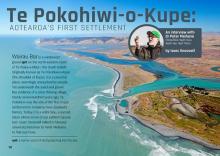


 Literacy Online home
Literacy Online home
